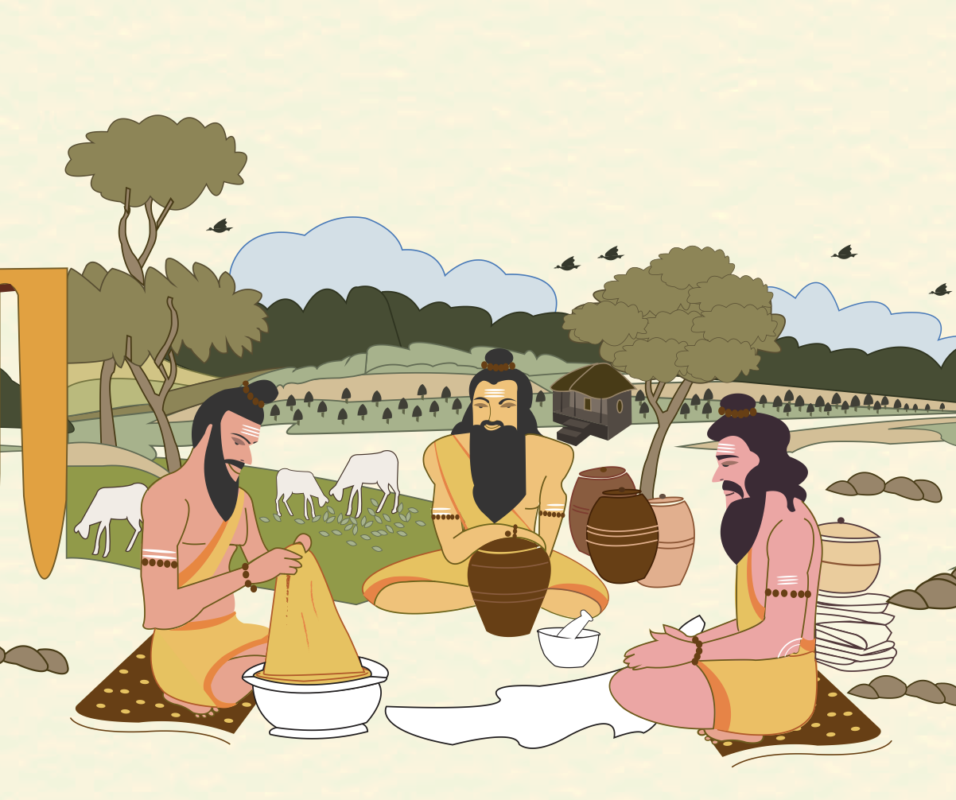Ayurveda
The Four Vedas: A Brief Introduction
Vedas are considered the earliest Indo-Aryan literary scriptures. They are the holiest and most sacred Hindu texts. The four Vedas are known as Apaurusheya, which means not composed or written by mortals. Vedas, all across the globe in the literary world, have a high regard and enjoy a unique position. The Vedas were compiled by rishi-munis or sages based on knowledge of intuition, hence called Shrutis: directly heard by intuitions.
Vedas are written in the Sanskrit language and are the Holy Scriptures of Sanatana Dharma or Hinduism. Vedas’ teachings and knowledge are not limited to religious or spiritual beliefs but encompass various other fields that guide and surround a human being’s life. From health to medical science, religion, and spirituality, Vedas explores and talks about much more than one can comprehend, from politics to economics.
Veda means wisdom, vision, perception, or knowledge. The Vedic scripts from birth guide all the rituals and rites of Hinduism till death. Vedas’s regulations and laws have been the foundational basis of social, domestic, and religious customs of practicing Hindus.
Origin of the Vedas
The Rig Veda is said to be the oldest of the four Vedas. It was written somewhere around 1600 BCE. This information is based on the historical findings of scholars. However, as per the astronomical data, Hindus calculate the date of the origin of Vedas depending on the Mahabharatha war and its timing.
As per Aryabhatta, the first mathematical astronomer of India Mahabharatha war happened in 3138 B.C so the Rig Veda would have been composed and compiled at or around 4107 B.C. As per Vedanta and Mimamsa schools of philosophy, Vedas are svatah pramana, which is a Sanskrit word meaning: self-evident and self-sustainable means of knowledge.
Authors of the Vedas
Various known and unknown authors have contributed to the supreme creation of these Vedic texts. The hymns in the Vedas are composed of various rishi-muni families. Some of those names are Agastyas, Grtsamadas, Kanvas, Angirases, Atris, Bharatas, Bhrgus, Viswamitras, Vasishtas, and Kasyapas.
A significant number of women authors also contributed to the Vedic hymns, to name a few, Apaalaa, Godhaa, Indraanii, Aditi, Lopamudra, and Sikataa. Vedic Culture by Swami Mahadevananda Giri has provided the names of the compilers, composers, and authors of Vedas.
The Four Vedas
The Vedas have been classified into four parts or volumes:
- The Rig Veda
- The Yajur Veda
- The Sama Veda
- The Atharva Veda
The collective name for the four Vedas is ‘Chaturveda.’ Initially, only one collection of hymns or mantras was further classified by Ved Vyas for preservation and study purposes. The most important one is the Rig Veda. The Samhitas is the further classification of Vedas.
Conclusion:
However, the fourth Veda, the Atharva Veda, is the most relevant text in contemporary society due to its teachings in healthcare, culture, medicine, literary traditions, and social structure of the Indian-sub continent. Its contribution to the Indian tradition and literary realm is priceless.


